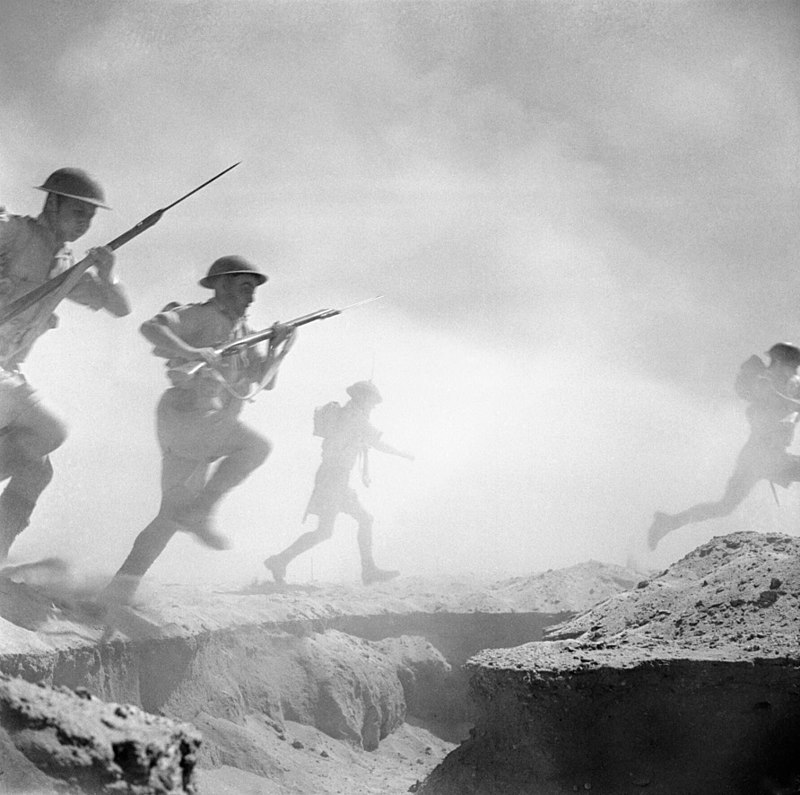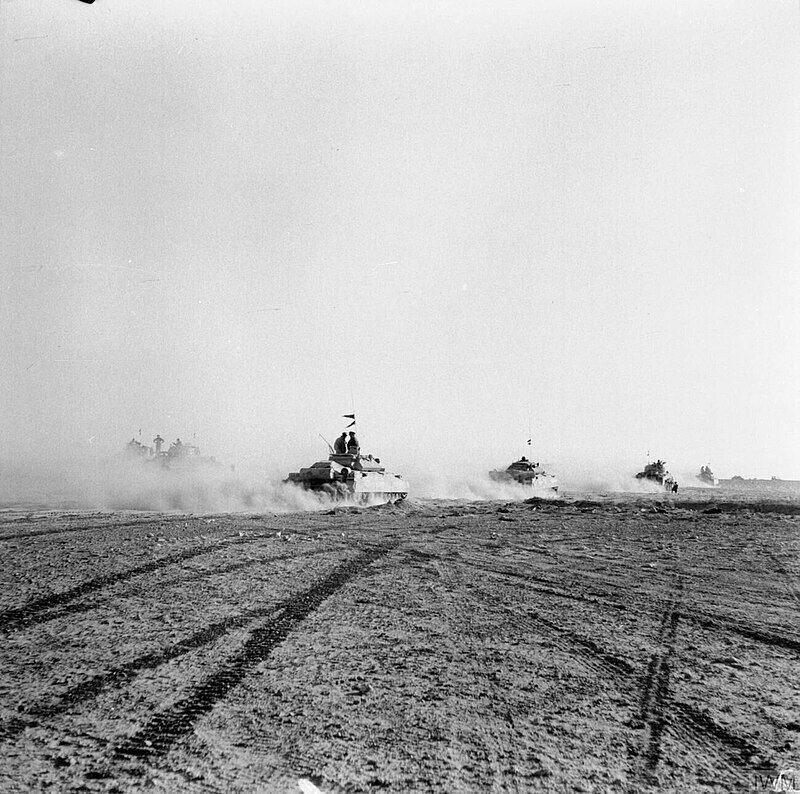The Second Battle of El Alamein October 23 – November 11, 1942 — The Turning of the Tide
From October 23 to November 11, 1942, Allied forces under Montgomery crushed Rommel’s Afrika Korps at El Alamein—ending the Axis drive toward Egypt and marking a major turning point in World War II.
November 6, 2025

 The Second Battle of El Alamein
The Second Battle of El Alamein
October 23 – November 11, 1942 — The Turning of the Tide
The desert was silent again—until the night of October 23, 1942, when thunder rolled across the sands of Egypt. For twelve days and nights, the earth at El Alamein shook beneath the weight of the greatest artillery barrage the North African desert had ever seen. The British Eighth Army, now rebuilt and commanded by Lieutenant General Bernard Law Montgomery, was ready to strike. Across the narrow front stood Field Marshal Erwin Rommel’s Afrika Korps, dug in and defiant, their fuel and ammunition dwindling, their backs to the west.
This was not merely another desert battle. It was the moment the Allies would seize the initiative—and the beginning of the end for the Axis in North Africa.
 The Stakes
The Stakes
Four months earlier, the First Battle of El Alamein had stopped Rommel’s advance just short of Alexandria. But the victory had been defensive—a desperate holding action. Now, Montgomery sought not to hold, but to destroy. The Eighth Army was resupplied, reorganized, and infused with new morale. It fielded more than 230,000 men and 1,000 tanks, supported by RAF Desert Air Force dominance in the skies.
Rommel’s army, by contrast, was near exhaustion—about 110,000 men and 500 tanks, hampered by a collapsing supply line from Europe. Yet the “Desert Fox” was determined to make a stand. He had fortified his front with deep minefields, barbed wire, and interlocking fields of fire. To reach the open desert beyond, Montgomery’s men would have to cut through what the troops called “the Devil’s Gardens.”
Operation Lightfoot
At 9:40 p.m. on October 23, the night sky erupted with the fire of over 800 guns. The barrage marked the start of Operation Lightfoot—the infantry assault designed to breach Rommel’s defenses. Engineers cleared paths through the minefields while Australian, New Zealand, South African, and British divisions advanced into a storm of machine-gun fire and artillery.
The name “Lightfoot” came from a grim joke: infantrymen were to step lightly through minefields so that only the heavier tanks would trigger the explosives. Many didn’t make it. The sand was strewn with wreckage and the wounded. But slowly, painfully, the Eighth Army began to push through.
The Breaking Point
For days, the battle raged with no decisive outcome. Both sides fought under blinding dust and scorching heat. Rommel, returning from illness in Germany, found his once-proud army worn thin and short of fuel. Montgomery, methodical and relentless, refused to rush. He ground the enemy down inch by inch, conserving strength for the decisive blow.
That blow came on November 2, 1942, with Operation Supercharge. British armor surged through a gap at Tel el Aqqaqir, shattering the Axis front. Rommel, recognizing the futility of continued resistance, began a fighting withdrawal westward toward Libya. When Hitler ordered him to stand and die in place, Rommel ignored the command—saving what remained of his army.
Victory in the Desert
By November 11, the Axis forces were in full retreat. Thousands of prisoners and immense quantities of equipment were captured. The Eighth Army had achieved one of the most complete victories of the war. The chase that followed would carry the Allies across Libya, into Tunisia, and ultimately to the destruction of the Axis position in Africa.
Legacy
The Second Battle of El Alamein was more than a battlefield triumph—it was a psychological turning point. After years of setbacks, the Allies had proven they could plan, supply, and win a major offensive. The victory electrified the home front and restored faith in ultimate victory.
As Winston Churchill famously declared:
“This is not the end. It is not even the beginning of th
e end.
But it is, perhaps, the end of the beginning.”
For the soldiers who fought amid the burning dunes, El Alamein was both hell and redemption. They had endured the heat, the flies, the dust, and the constant strain of combat. When it was over, they knew they had turned the tide of the entire war.
 The Second Battle of El Alamein
The Second Battle of El Alamein The Stakes
The Stakes
 e end.
e end.